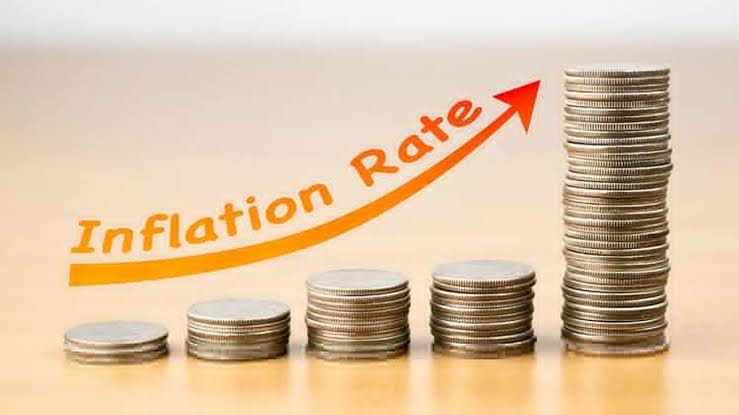The National Bureau of Statistics (NBS), has said that inflation rate has increased by 13.22 percent (year-on-year) in August compared to the 12.82 percent rate recorded in July.
SEE ALSO: COVID-19: Worldwide Cases Hit 25 Million- Johns Hopkins Tally
The NBS made this known in its Consumer Price Index (CPI), August 2020, published on its website.
The NBS explained that the increase recorded was 0.40 percent points higher, according to the consumer price index which measured inflation.
According to NBS, increases were recorded in all Classification of Individual Consumption According to Purpose (COICOP), divisions that yielded the Headline index.
“On a month-on-month basis, the Headline index increased by 1.34 per cent in August 2020. This is 0.09 per cent higher than the rate recorded in July 2020 (1.25 per cent).
“The percentage change in the average composite CPI for the 12 months period ending August 2020 over the average of the CPI for the previous twelve months period was 12.23 per cent, representing a 0.18 per cent point rise from 12.05 per cent recorded in July 2020.”
The report stated that the urban inflation rate increased by 13.83 per cent (year-on-year) in August from 13.40 per cent recorded in July.
Meanwhile, the rural inflation rate increased by 12.65 per cent in August from 12.28 per cent in July.
On a month-on-month basis, the urban index rose by 1.42 per cent in August, up by 0.15 from 1.27 per cent recorded in July.
The rural index also rose by 1.27 per cent in August, up by 0.04 from the rate recorded in July 2020 (1.23 per cent).
“The corresponding 12-month year-on-year average percentage change for the urban index was 12.85 per cent in August.
“This is higher than 12.66 per cent reported in July, while the corresponding rural inflation rate in August was 11.66 per cent compared to 11.49 per cent recorded in July,” the report stated.
Also, the composite food index rose by 16.00 per cent in August compared to 15.48 per cent in July.
The rise, according to NBS, is caused by increases in prices of bread and cereals, potatoes, yam and other tubers, meat, fish, fruits, oils and fats and vegetables.
On month-on-month basis, the food sub-index increased by 1.67 per cent in August, up by 0.15 per cent points from 1.52 per cent recorded in July.
Furthermore, the average annual rate of change of the Food sub-index for the 12-month period ending August over the previous 12-month average was 14.87 per cent.
This represented a 0.24 per cent points increase from the average annual rate of change recorded in July (14.63 per cent).
The ”All items less farm produce” (or core inflation), which excludes the prices of volatile agricultural produce, stood at 10.52 per cent in August.
The rate recorded an increase of 0.42 per cent compared with 10.10 per cent recorded in July.
On month-on-month basis, the core sub-index increased by 1.05 per cent in August.
The increase was up by 0.30 per cent when compared with 0.75 per cent recorded in July.
The highest increases were recorded in prices of passenger transport by air, hospital services, medical services, pharmaceutical products, maintenance and repair of personal transport equipment.
Others are vehicle spare parts, motor cars, passenger transport by road, miscellaneous services relating to the dwelling, repair of furniture and paramedical services.
The average 12-month annual rate of change of the index was 9.64 per cent for the period ending August.
This represented 0.16 per cent points higher than 9.48 per cent recorded in July.
All items index on year-on-year basis was highest in Kogi recording 17.29 per cent, Bauchi with 15.77 per cent, and Ebonyi and Yobe with 14.71 per cent each.
Meanwhile, recording the slowest rise in headline year-on-year inflation were Lagos (11.45 per cent), Kwara (11.22 per cent) and Abuja (11.17 per cent).
On month-on-month basis, however, all items inflation was highest in Ondo (2.20 per cent), Ogun (2.07 per cent) and Abia (1.87 per cent).
Meanwhile, while Plateau (0.72 per cent), Zamfara (0.60 per cent) and Sokoto (0.54 per cent) recorded the slowest rise in headline month-on-month inflation.

